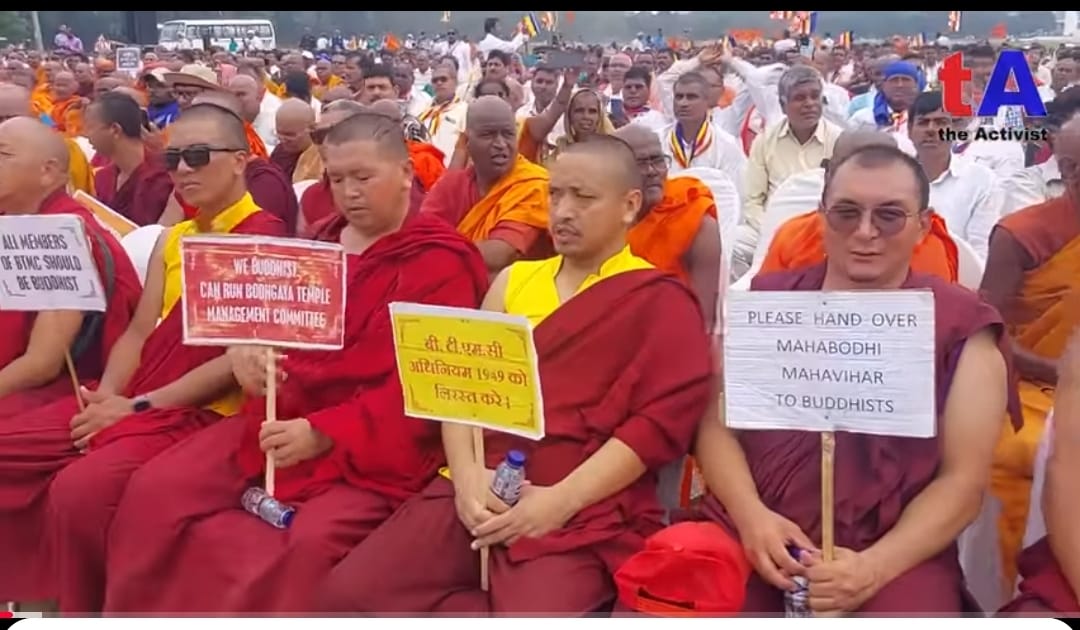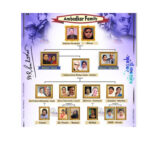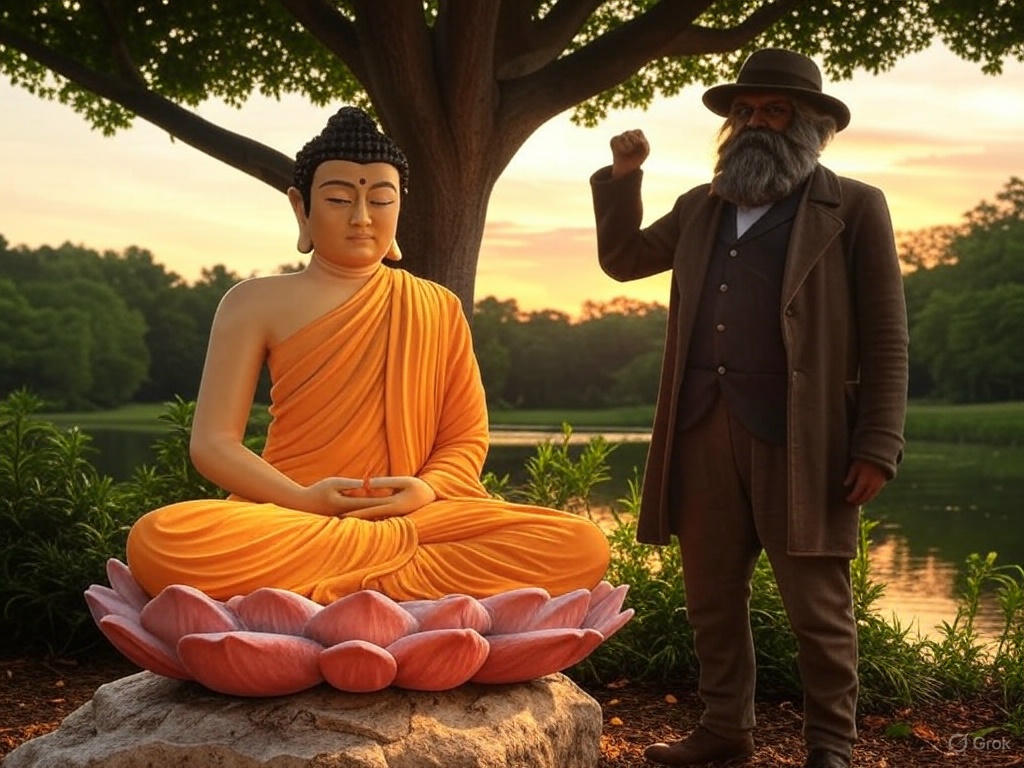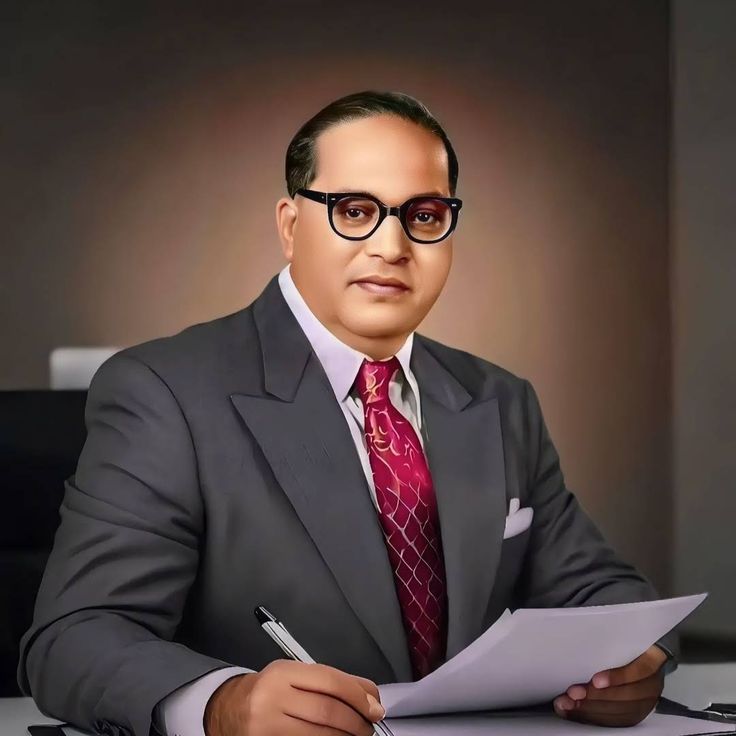Bodhgaya Protest: A Fight for Buddha’s Legacy
Bodh Gaya, Bihar—a quiet town where Gautama Buddha found peace under a tree over 2,500 years ago. Now, in 2025, it’s buzzing with voices, flags, and hunger strikes. The Bodhgaya protest, also called the Bodhgaya Mukti Andolan, isn’t just noise, it’s a cry from Buddhist monks and followers who want their holiest temple back. They’re asking, why do non-Buddhists control the Mahabodhi Temple, where Buddha became the Awakened One?
This isn’t a new fight, but it’s hotter than ever today. Monks are fasting, people are marching, and the world is watching. What’s it all about? Why does it matter to India and beyond? Let’s walk through this story together and see why Bodhgaya is more than a place; it’s a battle for identity.
What’s Happening? The Bodhgaya Protest Today
Right now, in March 2025, the Bodhgaya protest is making headlines. It started on February 12, when hundreds of Buddhist monks and supporters began an indefinite hunger strike near the Mahabodhi Temple. They’re part of the Bodhgaya protest a movement to free the temple from non-Buddhist control. By late February, some monks were detained by police at 1 a.m., sparking anger. Today, the fast has stretched over 25 days, with monks’ health fading fast.
Their demand? Scrap the Bodhgaya Temple Act of 1949. This law set up a nine-member Bodhgaya Temple Management Committee (BTMC)—but only four should be Buddhists. The rest, including the chairman (Gaya’s District Magistrate), must be Hindus. And if the District Magistrate is not Hindu, then the chairman will be among the Hindu members. wow, what a law, man! Protesters say this is unfair. This is Buddha’s place, why are there five Hindu members mandatory? In all mosques, all committee members are Muslim, in all Hindu temples, all committee members are Hindu. Then why an exception here?
” Brothers, you have to know, that Lord Manu’s sons are always tolerant, they expect the temple’s income on the basis of cast. and expect reservation on the basis of Economy.”
Why the Anger? A Temple’s History
To get this, let’s go back. The Mahabodhi Temple was built by Emperor Ashoka around 250 BCE, marking where Buddha gained enlightenment. It’s a UNESCO World Heritage Site—sacred to Buddhists worldwide. But over centuries, Buddhism faded in India, and the temple fell into ruin after invasions in the 12th century. A Sri Lankan monk, Anagarika Dharmapala, revived it in the 1890s, starting a push for Buddhist control.
Then came 1949. The new law gave Hindus a majority on the BTMC. Why? Some say it was politics, some say India was balancing faiths. But Buddhists call it a betrayal. They point to history, kings like Pushyamitra Shunga, a Brahmin, once crushed Buddhist monks. “Our temple’s been stolen,” a protester says. Today’s Bodhgaya Mukti Andolan wants that wrong fixed.
The Protest in Action: Hunger and Hope
What does the Bodhgaya protest look like? Monks in orange robes sit under the open sky, refusing food. By March 7, doctors warned some could die—their fast is that serious. Supporters wave blue flags, chanting Jay Bhim—a nod to Dr. B.R. Ambedkar, who revived Buddhism here in 1956 with 500,000 followers.
On February 27, police tried to stop it, taking monks to a hospital. But the movement grew. Prakash Ambedkar, leader of Vanchit Bahujan Aghadi, joined in, saying, “The government’s blind to this.” Buddhists from Ladakh to Japan back it too. A petition to the Supreme Court, filed in 2012 but unheard for 13 years, got a fresh plea this week—lawyer Anand Jondhale begged for action to save lives.
Why It Matters: More Than a Temple
This isn’t just about who runs a building. It’s about identity. In India, temples, mosques, and gurdwaras are usually managed by their own communities—except here. Buddhists feel cheated. “If Hindus control Buddha’s temple, what’s left for us?” asks Ven. Tsering Chosphel from Ladakh.
The Bodhgaya Mukti Andolan ties to Ambedkar’s call: organize against injustice.
Voices of the Fight: What People Say
Leaders are loud. Rajratna Ambedkar, from the Buddhist Society of India, wrote to the UN and UNESCO, calling the 1949 Act “discriminatory.” Jigmet Rafstan from Ladakh says, “All nine BTMC members should be Buddhists—it’s our right.” Even locals feel it. Rakesh, a Gaya shopkeeper, told me, “Monks are suffering. Something’s wrong.”
Critics argue back. Some Hindus on the BTMC say they’ve kept the temple safe and open to all. But protesters disagree, they said, “They ring bells like it’s a Hindu shrine, showing Buddha’s sculptures and tell, this is Pandav, Arjuna, Bhim, Nakul, Sahdeva,
And the Joke is that all the Buddha’s sculptures are there. “This kind of safety is kept there by BTMC Hindu. Protesters called it a “cultural theft.”
What’s Next? A Turning Point
As of March 8, 2025, the Bodhgaya protest today is at a crossroads. Monks vow to fast until the Act changes or they die. The Supreme Court might finally hear that 2012 case. Global eyes—from Thailand to the USA—are on Bihar’s government, which stays quiet. Will it bend? Or will this spark a bigger fire?
Think of Ambedkar. He organized 500,000 to reclaim Buddhism at Nagpur. Today’s movement feels like his echo—a fight not just for a temple, but for pride. If it wins, Bodhgaya could be a symbol of justice again.
Conclusion: A Call to Care
The Bodhgaya protest isn’t just monks versus a law. It’s a story of faith, history, and a people saying, “Enough.” From Buddha’s peace to Ambedkar’s fire, it’s India’s soul in motion. In 2025, as monks starve for their rights, we can’t look away. Will Bodhgaya stay a battleground or become a victory? That’s up to us—to listen, learn, and act. it’s a challenge. Are you with it?
Jay Bhim!









